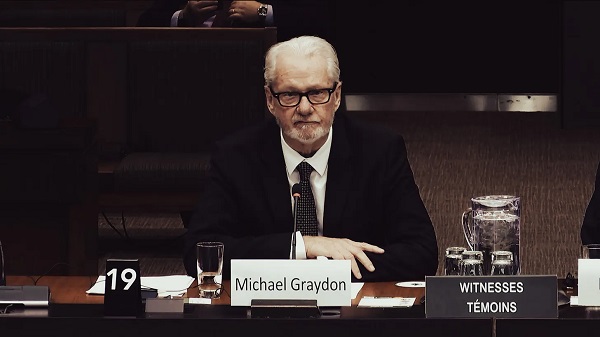Business
Solving the Housing Affordability Crisis With This One Cool Trick

As you’ll soon see, local and provincial governments – if they were so inspired – could drop the purchase price on new homes by 20 percent. Before breakfast.
The Audit is a reader-supported publication. To receive new posts and support my work, consider becoming a free or paid subscriber.
It’s all about taxes and fees. This post will focus mostly on taxes and fees as they apply to new construction of relatively expensive detached homes. But the basic ideas will apply to all homes – and will also impact rentals.
Here are some estimated numbers to chew on. Scenarios based on varying permutations and combinations will produce different results, but I think this example will be a good illustration.
Let’s say that a developer purchases a single residential plot in Toronto for $1.4 million. In mature midtown neighborhoods, that figure is hardly uncommon. The plan is to build an attractive single family home and then sell it on the retail market.
Here are some estimates of the costs our developer will currently face:
- Construction costs on a 2,000 sq. ft. home (@ $350/sq. ft.): $700,000
- Land transfer taxes on the initial land purchase: $35,000
- Development fees: $100,000
- Permits and zoning/site approvals: $40,000
Total direct development costs would therefore come to $875,000. Of course, that’s besides the $1.4 million purchase price for the land which would bring our new running total to $2,275,000.
We’ll also need to account for the costs of regulatory delays. Waiting for permits, approvals, and environmental assessments can easily add a full year to the project. Since nothing can begin until the developer has legal title to the property, he’ll likely be paying interest for a mortgage representing 80 percent of the purchase price (i.e., $1,120,000). Even assuming a reasonable rate, that’ll add another $60,000 in carrying charges. Which will bring us to $2,335,000.
And don’t forget lawyers and consultants. They also have families to feed! Professional guidance for navigating through the permit and assessment system can easily cost a developer another $25,000.
That’s not an exhaustive list, by the way. To keep things simple, I left out Toronto’s Parkland Dedication Fee which, for residential developments, can range from 5 to 20 percent of the land value. And the Education Development Charges imposed by school boards was also ignored.
So assuming everything goes smoothly – something that’s far from given – that’ll give us a total development cost of $2,360,000. To ensure compensation for the time, work, investments, and considerable risks involved, our developer is unlikely to want to sell the home for less than $2,700,000.
But various governments are still holding their hands out. When the buyers sign an agreement of purchase, they’ll be on the hook for land transfer taxes and – since it’s a new house – HST. Ontario and Toronto will want about four percent ($108,000) for the transfer (even though they both just cashed in on the very same transfer tax for the very same land at the start of the process). And, even taking into account both the federal and Ontario rebates, getting the keys to the front door will require handing over another $327,000 for HST.
Here’s how development fee schedules currently look in Toronto:
And here’s a breakdown of the land transfer taxes assessed against anyone buying land:
In our hypothetical case, those fees would give us a total, all-in purchase price of $3,135,000. How much of that is due to government involvement (including associated legal and interest fees)? Around $695,000.
That’s $695,000 our buyers will pay – over and above the actual costs of land and construction. Or, in other words, a 22 percent markup.
Let’s put this a different way. If the cost of the median home in Canada dropped by 22 percent, then around 1.5 million extra Canadian households could enter the market. Congratulations, you’ve solved the housing affordability crisis. (Although supply problems will still need some serious work.)
Now it’s probably not realistic to expect politicians in places like the Ontario Legislature and Toronto City Council to give up that kind of income. But just lowering their intake by 50 or even 25 percent – and reducing the costs and pain points of acquiring permits – could make a serious difference. Not only would it lower home sale prices, but it would lower the barriers to entry for new home construction.
Just what were all those taxes worth to governments? Let’s begin with the City of Toronto. Their 2023 Financial Report tells us that land transfer taxes generated $944 million, permits and zoning applications delivered $137 million, and development fees accounted for $1.45 billion. Total city revenues in 2023 were $16.325 billion.
We’re told that all that money was spent on:
- Roads and transit systems
- Water and wastewater systems
- Fire and emergency services
- Parks and recreation facilities
- Libraries
Well, we do need those things right? We can’t expect the city to just eliminate fire and emergency services.
Wait. Hang on. I seem to recall being told that revenue from my property tax bill covered those services. Yes! My property tax did fund those things. Not 100 percent of those things, but a lot.
Specifically, Toronto property tax revenues cover 65 percent of the municipal costs for roads and transit systems, 85 percent of fire and emergency services, 75 percent of parks and recreation facilities, and 95 percent of library costs (even though very few people use public libraries any more).
Granted, property tax revenue covered only five percent of water and wastewater systems, but that’s because another 40 percent came from user fees (i.e., utility bills).
So revenues from land transfer taxes, developer fees, and permitting aren’t an insignificant portion of City income, but they’re hardly the linchpin propping the whole thing up either. City Council could respond to losing that income by increasing property taxes. Or – and I’m just throwing around random ideas here – they could reduce their spending.
Now what about the province? I couldn’t get a good sense of how much of their HST revenue comes specifically from new home sales, but Ontario’s 2023–24 consolidated financial statements tell us that provincial land transfer taxes brought in $3.538 billion. That would be around 1.7% of total government revenues. Again, a bit more than a rounding error.
Politics is about finding balances through trade offs. Sure, maintaining program spending while minimizing deficits is an ongoing and real challenge for governments. On the other hand, they all say they’re concerned about the housing crisis. Foregoing just one to five percent of revenues should, given the political payoffs and bragging rights that could follow, probably be an easy pill to swallow.
A few weeks ago I reached out to the City of Toronto Housing Secretariat and the Province of Ontario’s Municipal Affairs and Housing for their thoughts. I received no response.
The Audit is a reader-supported publication. To receive new posts and support my work, consider becoming a free or paid subscriber.
Business
Budget 2025: Ottawa Fakes a Pivot and Still Spends Like Trudeau
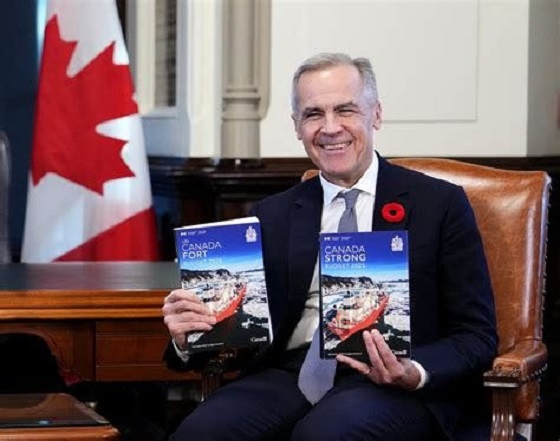
It finally happened. Canada received a federal budget earlier this month, after more than a year without one. It’s far from a budget that’s great. It’s far from what many expected and distant from what the country needs. But it still passed.
With the budget vote drama now behind us, there may be space for some general observations beyond the details of the concerning deficits and debt. What kind of budget did Canada get?
Haultain’s Substack is a reader-supported publication.
To receive new posts and support our work, please consider becoming a free or paid subscriber.
Try it out.
For a government that built its political identity on social-program expansion and moralized spending, Budget 2025 arrives wearing borrowed clothing. It speaks in the language of productivity, infrastructure, and capital formation, the diction of grown-up economics, yet keeps the full spending reflex of the Trudeau era. The result feels like a cabinet trying to change its fiscal costume without changing the character inside it. Time will tell, to be fair, but it feels like more rhetoric, and we have seen this same rhetoric before lead to nothing. So, I remain skeptical of what they say and how they say it.
The government insists it has found a new path, one where public investment leads private growth. That sounds bold. However, it is more a rebranding than a reform. It is a shift in vocabulary, not in discipline.
A comparison with past eras makes this clear.
Jean Chrétien and Paul Martin did not flirt with restraint; they executed it. Their budgets were cut deeply, restored credibility, and revived Canada’s fiscal health when it was most needed. The Chrétien years were unsentimental. Political capital was spent so financial capital could return. Ottawa shrank so the country could grow. Budget 2025 tries to invoke their spirit but not their actions. Nothing in this plan resembles the structural surgery of the mid 1990s.
Stephen Harper, by contrast, treated balanced budgets as policy and principle. Even during the global financial crisis, his government used stimulus as a bridge, not a way of life. It cut taxes widely and consistently, limited public service growth, and placed the long-term burden on restraint rather than rhetoric. Budget 2025 nods toward Harper’s focus on productivity and capital assets, yet it rejects the tax relief and spending controls that made his budgets coherent.
Then there is Justin Trudeau, the high tide of redistribution, vacuous identity politics, and deficit-as-virtue posturing. Ottawa expanded into an ideological planner for everything, including housing, climate, childcare, inclusion portfolios, and every new identity category. Much of that ideological scaffolding consisted of mere words, weakening the principle of equality under the law and encouraging the government to referee culture rather than administer policy.
Budget 2025 is the first hint of retreat from that style. The identity program fireworks are dimmer, though they have not disappeared. The social policy boosterism is quieter. Perhaps fiscal gravity has begun to whisper in the prime minister’s ear.
However, one cannot confuse tone for transformation.
Spending is still vast. Deficits grew. The new fiscal anchor, balancing only the operating budget, is weaker than the one it replaced. The budget relies on the hopeful assumption that Ottawa’s capital spending will attract private investment on a scale that economists politely describe as ambitious.
The housing file illustrates the contradiction. The budget announces new funding for the construction of purpose-built rentals and a larger federal role in modular and subsidized housing builds. These are presented as productivity measures, yet they continue the Trudeau-era instinct to centralize housing policy rather than fix the levers that matter. Permitting delays, zoning rigidity, municipal approvals, and labour shortages continue to slow actual construction. Ottawa spends, but the foundations still cure at the same pace.
Defence spending tells the same story. Budget 2025 offers incremental funding and some procurement gestures, but it avoids the core problem: Canada’s procurement system is broken. Delays stretch across decades. Projects become obsolete before contracts are signed. The system cannot buy a ship, an aircraft, or an armoured vehicle without cost overruns and missed timelines. Spending more through this machinery will waste time and money. It adds motion, not capability.
Most importantly, the structural problems remain untouched: no regulatory reform for major projects, no tax competitiveness agenda, no strategy for shrinking a federal bureaucracy that has grown faster than the economy it governs. Ottawa presides over a low-productivity country but insists that a new accounting framework will solve what decades of overregulation and policy clutter have created. More bluster.
To receive new posts and support our work, please consider becoming a free or paid subscriber.
From an Alberta vantage, the pivot is welcome but inadequate. The economy that pays for Confederation, energy, mining, agriculture, and transportation receives more rhetorical respect in Budget 2025, yet the same regulatory thicket that blocks pipelines and mines remains intact. The government praises capital formation but still undermines the key sectors that generate it.
Budget 2025 tries to walk like Chrétien and talk like Harper while spending like Trudeau. That is not a transformation; it is a costume change. The country needed a budget that prioritized growth rooted in tangible assets and real productivity. What it got instead is a rhetorical turn without the courage to cut, streamline, or reform.
Canada does not require a new budgeting vocabulary. It requires a government willing to govern in the best interest of the country.
Haultain’s Substack is a reader-supported publication.
Help us bring you more quality research and commentary.
Business
Large-scale energy investments remain a pipe dream
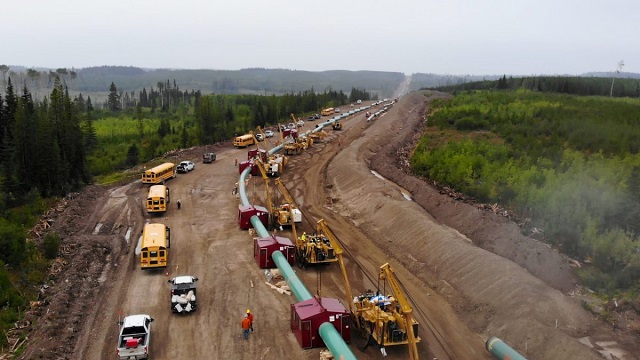
I view the recent announcements by the Government of Canada as window dressing, and not addressing the fundamental issue which is that projects are drowning in bureaucratic red tape and regulatory overburden. We don’t need them picking winners and losers, a fool’s errand in my opinion, but rather make it easier to do business within Canada and stop the hemorrhaging of Foreign Direct Investment from this country.
Thanks for reading William’s Substack!
Subscribe for free to receive new posts and support my work.
Changes are afoot—reportedly, carve-outs and tweaks to federal regulations that would help attract investment in a new oil pipeline from Alberta. But any private proponent to come out of this deal will presumably be handpicked to advance through the narrow Bill C-5 window, aided by one-off fixes and exemptions.
That approach can only move us so far. It doesn’t address the underlying problem.
Anyone in the investment world will tell you a patchwork of adjustments is nowhere near enough to unlock the large-scale energy investment this country needs. And from that investor’s perspective, the horizon stretches far beyond a single political cycle. Even if this government promises clarity today in the much-anticipated memorandum of understanding (MOU), who knows whether it will be around by the time any major proposal actually moves forward.
With all of the talk of “nation-building” projects, I have often been asked what my thoughts are about what we must see from the federal government.
The energy sector is the file the feds have to get right. It is by far the largest component of Canadian exports, with oil accounting for $147 billion in 2024 (20 percent of all exports), and energy as a whole accounting for $227 billion of exports (30 percent of all exports).
Furthermore, we are home to some of the largest resource reserves in the world, including oil (third-largest in proven reserves) and natural gas (ninth-largest). Canada needs to wholeheartedly embrace that. Natural resource exceptionalism is exactly what Canada is, and we should be proud of it.
One of the most important factors that drives investment is commodity prices. But that is set by market forces.
Beyond that, I have always said that the two most important things one considers before looking at a project are the rule of law and regulatory certainty.
The Liberal government has been obtuse when it comes to whether it will continue the West Coast tanker ban (Bill C-48) or lift it to make way for a pipeline. But nobody will propose a pipeline without the regulatory and legal certainty that they will not be seriously hindered should they propose to build one.
Meanwhile, the proposed emissions cap is something that sets an incredibly negative tone, a sentiment that is the most influential factor in ensuring funds flow. Finally, the Impact Assessment Act, often referred to as the “no more pipelines bill” (Bill C-69), has started to blur the lines between provincial and federal authority.
All three are supposedly on the table for tweaks or carve-outs. But that may not be enough.
It is interesting that Norway—a country that built its wealth on oil and natural gas—has adopted the mantra that as long as oil is a part of the global economy, it will be the last producer standing. It does so while marrying conventional energy with lower-carbon standards. We should be more like Norway.
Rather than constantly speaking down to the sector, the Canadian government should embrace the wealth that this represents and adopt a similar narrative.
The sector isn’t looking for handouts. Rather, it is looking for certainty, and a government proud of the work that they do and is willing to say so to Canada and the rest of the world. Foreign direct investment outflows have been a huge issue for Canada, and one of the bigger drags on our economy.
Almost all of the major project announcements Prime Minister Mark Carney has made to date have been about existing projects, often decades in the making, which are not really “additive” to the economy and are reflective of the regulatory overburden that industry faces en masse.
I have always said governments are about setting the rules of the game, while it is up to businesses to decide whether they wish to participate or to pick up the ball and look elsewhere.
Capital is mobile and will pursue the best risk-adjusted returns it can find. But the flow of capital from our country proves that Canada is viewed as just too risky for investors.
The government’s job is not to try to pick winners and losers. History has shown that governments are horrible at that. Rather, it should create a risk-appropriate environment with stable and capital-attractive rules in place, and then get out of the way and see where the chips fall.
Link to The Hub article: Large-scale energy investments remain a pipe dream
Formerly the head of institutional equity research at FirstEnergy Capital Corp and ATB Capital Markets. I have been involved in the energy sector in either the sell side or corporately for over 25 years
Thanks for reading William’s Substack!
Subscribe for free to receive new posts and support my work.
-

 Daily Caller2 days ago
Daily Caller2 days agoTrump Gives Zelenskyy Until Thanksgiving To Agree On Peace Deal, With U.S. Weapons And Intel On The Line
-

 Daily Caller2 days ago
Daily Caller2 days agoBari Weiss Reportedly Planning To Blow Up Legacy Media Giant
-

 COVID-192 days ago
COVID-192 days agoFreedom Convoy protestor Evan Blackman convicted at retrial even after original trial judge deemed him a “peacemaker”
-

 Business1 day ago
Business1 day agoI Was Hired To Root Out Bias At NIH. The Nation’s Health Research Agency Is Still Sick
-

 Carbon Tax15 hours ago
Carbon Tax15 hours agoCarney fails to undo Trudeau’s devastating energy policies
-

 Health11 hours ago
Health11 hours agoTens of thousands are dying on waiting lists following decades of media reluctance to debate healthcare
-
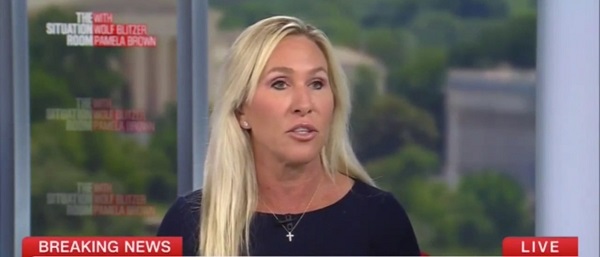
 Daily Caller2 days ago
Daily Caller2 days agoMTG Says She’s Resigning From Office
-
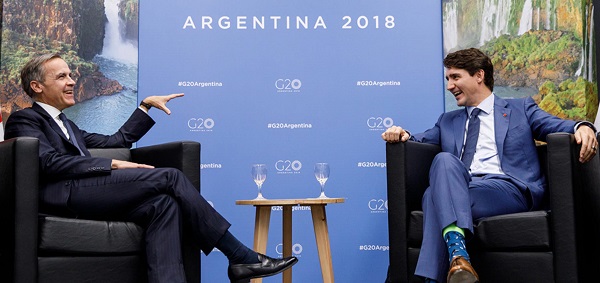
 International21 hours ago
International21 hours agoCanada’s lost decade in foreign policy











